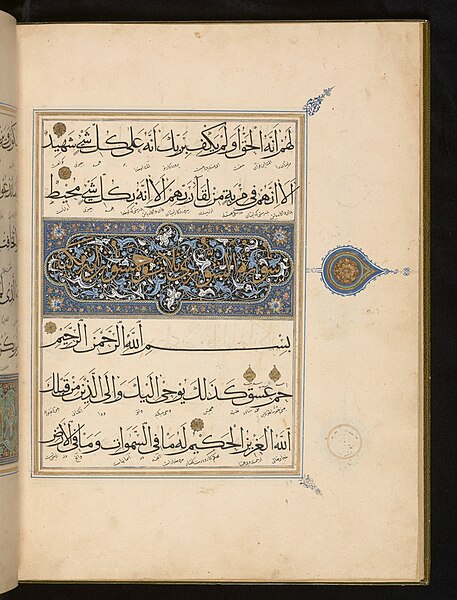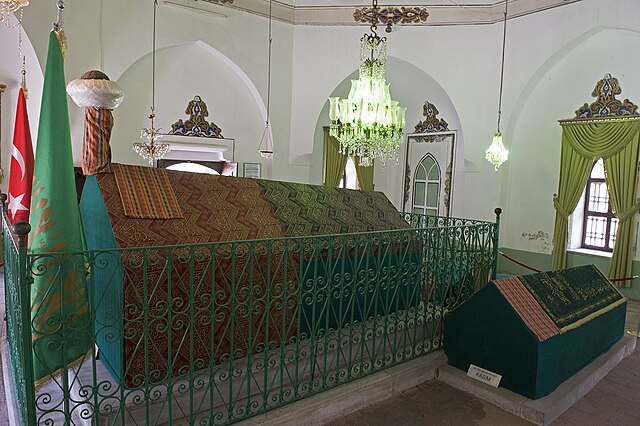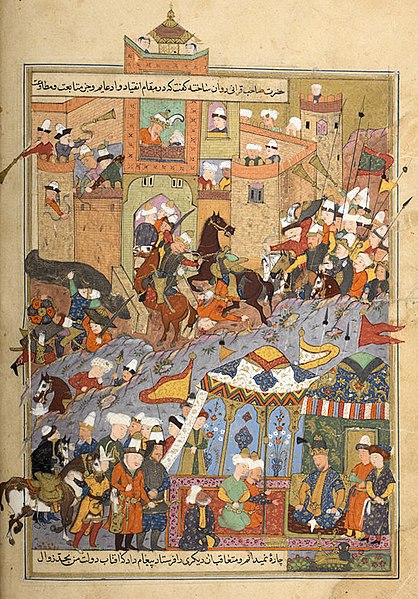Bayezid I, also known as Bayezid the Thunderbolt, was the sultan of the Ottoman Empire from 1389 to 1402. He adopted the title of Sultan-i Rûm, Rûm being the Arabic name for the Eastern Roman Empire. In 1394, Bayezid unsuccessfully besieged Constantinople. Bayezid vanquished all the Beyliks and proceeded to conquer and vassalize the entirety of Anatolia. In 1402, he once more besieged Constantinople, appearing to find success, but he ultimately withdrew due to the invasion of the Mongol conqueror Timur. He defeated the Crusaders at the Battle of Nicopolis in what is now Bulgaria in 1396. He was later defeated and captured by Timur at the Battle of Ankara in 1402 and died in captivity in March 1403, which triggered the Ottoman Interregnum.
Bayezid I by Cristofano dell'Altissimo, c. 16th century
A Bayezid-era manuscript of the Quran
Bayezid I held captive by Timur, painting by Stanisław Chlebowski (1878)
Bayezid's türbe (tomb) at Bayezid I Mosque
Timur, also known as Tamerlane, was a Turco-Mongol conqueror who founded the Timurid Empire in and around modern-day Afghanistan, Iran, and Central Asia, becoming the first ruler of the Timurid dynasty. An undefeated commander, he is widely regarded as one of the greatest military leaders and tacticians in history, as well as one of the most brutal and deadly. Timur is also considered a great patron of art and architecture as he interacted with intellectuals such as Ibn Khaldun, Hafez, and Hafiz-i Abru and his reign introduced the Timurid Renaissance.
Timur facial reconstruction from skull, by Mikhail Mikhaylovich Gerasimov
Depiction of Timur granting audience on the occasion of his accession, in the near-contemporary Zafarnama (1424–1428), 1467 edition
Timur commanding the Siege of Balkh
Timur enthroned at Balkh








